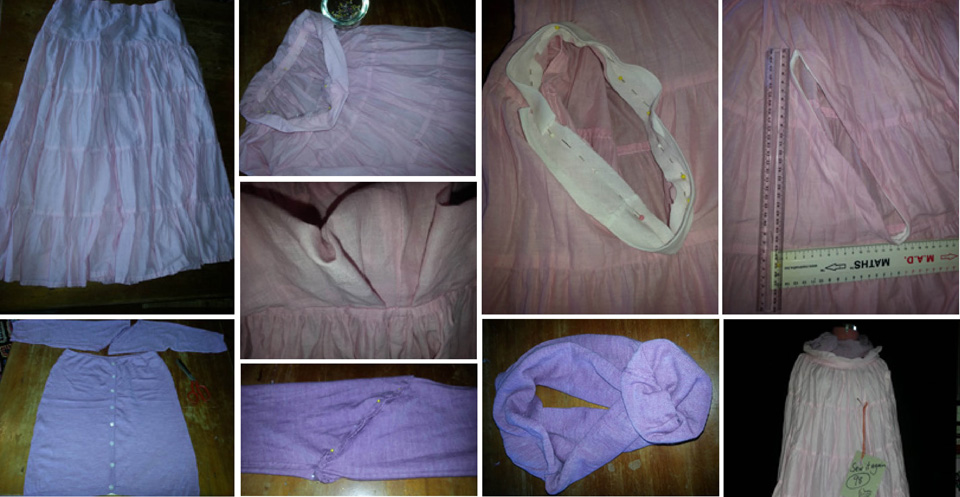 Fast fashion fosters a wear and toss approach to modern dress in the never-ending search for satisfaction from material consumption.
Fast fashion fosters a wear and toss approach to modern dress in the never-ending search for satisfaction from material consumption.
More meaningful and realistic approaches to fashion have been studied and distilled into beautiful words by the Local Wisdom project out of the United Kingdom’s Centre for Sustainable Fashion.
By exploring our relationship with clothes, researchers unearthed themes of usership based on people’s stories. You can view these words in pictures via The Guardian article from which I sourced the words below:
Patina of use: with our garments, as with our bodies, the passing of time leaves its mark. With clothes, we sometimes discard pieces because they are ageing, dated, jaded or worn; at other times we buy vintage pieces, coveting that which looks old. Yet these both overlook the power and pleasure of marking the passing of time as it is recorded in our clothes; the forging of memories, building of knowledge, evolution of appearance.
Alternative dress codes: the choices we make about what we wear are influenced by life present, lives past and our ideas about our future selves. Expressions of values, aspirations, heritage, understanding and the physical shape of our bodies build a rationale for dress that transcend narrow commercial views about fashion.
Transfer of ownership: giving a garment to someone else is sometimes a straightforward and spontaneous act and at other times more circuitous. The overlapping of ownership can embed a garment with memories.
Skills of resourcefulness: Creative activists contribute greatly to society through innovation and experiment. Their work is a training ground for new practices, for trialling novel approaches and reviving old skills that promote alternative ideas about fashion provision and consumption.
In simple terms, these themes roughly translate into the actions of revive, recreate, swap, upcycle which resonate with my Sew it Again work this year demonstrating creative ways to reuse clothing that already exists in the world instead of buying new stuff.
Some strategies for wrangling your wardrobe are outlined in the 2008 book Save your money, your time and your planet, by Shannon Lush and Jennifer Fleming who suggest doing a wardrobe audit at the beginning of spring and autumn (as it is now in Australia).
“If you haven’t worn something all season work out why. Are repairs needed? Are there stains? Is it uncomfortable? So you dislike the fabric? Take note of these things, so the next time you go shopping you won’t make the same mistakes. Either donate unwanted clothes to charity, sell in a second-hand shop or recycle.“
On the topic of natural fibres, Lush and Fleming say: “As a general rule, clothes made from natural fibres last longer and are cheaper and easier to clean because they can be washed and stains float out of the fibres more readily. Synthetic fabrics hold stains and odours, need more frequent cleaning and often require dry-cleaning which is expensive and not environmentally friendly.”
The two natural-fibre garments that make up Sew 98 have been switched on their heads – the wool cardigan becomes a skirt and cotton skirt now a swing top.
The pink wool cardigan wasn’t being worn, so it easily becomes a jumper-skirt by cutting off under the sleeves, scooping down at the waist and adding elastic. The sleeves are trimmed and sewn together as a tube (opposite sides together) which can be worn as a neck warmer. The op-shop cotton skirt is a dated style and was looking a little ragged around the waistline. I morphed it into a swing top by first turning the waistband inside and sewing it onto the seam of the first frill. I dealt with the extra volume by making tucks on both sides at the side seams. If you sew from the outside, you can ensure the stitching looks neat and sits beside the gathers of the adjoining frill layer. I estimated where to cut arm openings, beginning from the edge of my shoulder. See photo, I measured about 25cm vertical and 15cm horizontal and cut a forward-sloping opening about 25cm in length, which I then finished using bias tape. You could wear a skivvy underneath for warmth, putting arms out through the holes when you are working and resting them under the swing-top when not.
Reflecting back on the Local Wisdom project words above, this swing top embraces all four sentiments: it has patina from previous use, is an alternative way of dressing, had a previous owner and is resourcefully resewn using traditional skills.

Wonderful to find this all up and running Jane – congratulations! x